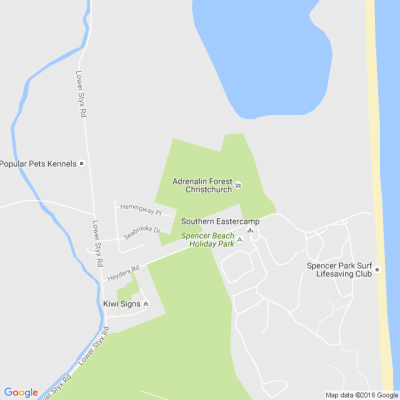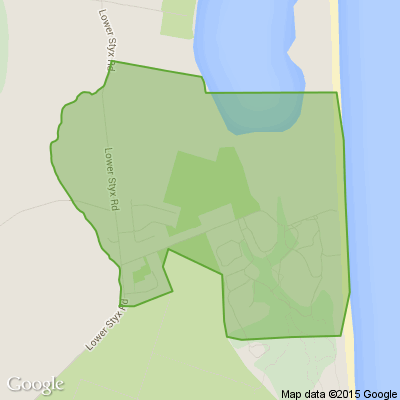
Know what’s happening
Access the private noticeboard for verified neighbours near you. Keep informed about any suspicious activity, send urgent updates to your neighbours when required and discuss emergency planning.
Get to know your neighbours
Browse the directory and start getting to know your neighbours. Don’t want to post to the whole neighbourhood? Send a private message.
Buy, sell and give away
Want to declutter your garage? Buy some used household items? Give away some garden stuff? Become a verified neighbour to browse and post items for sale. Trading is simple when everyone lives nearby.


Bring out the best in the concrete you already have #resenetip
Rejuvenate or refresh the colour of concrete inside or out with Resene ConcreteWash, a wash of sheer colour that can help to warm up the look of concrete without the need to replace it.

Thank you for using Neighbourly
You may receive an email confirmation for any offer you selected. The associated companies will contact you directly to activate your requests.
Nicole Mathewson Reporter from The Press
From reporter Tina Law:
Excess water bills have been sent out to almost 4000 Christchurch residents, but the city council is now considering increasing how much water people can use before being stung with a charge.
The surprise move was made on Tuesday as the Christchurch City Council … View moreFrom reporter Tina Law:
Excess water bills have been sent out to almost 4000 Christchurch residents, but the city council is now considering increasing how much water people can use before being stung with a charge.
The surprise move was made on Tuesday as the Christchurch City Council agreed to put its draft budget, the annual plan, out for consultation. It has proposed a 5.68% average rates increase, down from a figure of 14.6% signalled late last year.
The average residential increase would be 5.79%. This would mean the average house (valued at $764,364) will have a rates increase of $3.52 per week or $183 a year, excluding any individual impact from the recent rating revaluation.
The council’s excess water charge, introduced in October following two lots of consultation, has been labelled as unfair by some residents, especially as almost a quarter (25,365) of Christchurch households share a meter and can not be charged.
Some councillors, including Sam MacDonald have never been in favour of the charge and on Tuesday, he asked the council to increase the daily allowance from 700 litres to 900 litres.
His bid was successful, but only just, with nine votes for and eight against.
The decision was made against staff advice and will be subject to public consultation as part of the draft budget, which comes out on March 10.
Under the existing rules, adopted last year, people are being charged a fixed rate of $1.35 for every 1000 litres they use over the 700-litre limit, which is the equivalent of 100 toilet flushes.
Bills have not been sent out for $25 or less, so people have to use more than 900 litres each day over 90 days to receive a bill under the current rule. Once a bill goes above $25, the householder is charged for all usage above 700 litres.
Any change would not be put in place until July, so would not affect the 3913 households who have just been sent a bill or others that will receive one before July.
The council said on Tuesday the average bill is $78 and the highest is $264.87.
Council chief financial officer Leah Scales said bills had already been sent out and any indication that the charge was changing next year would affect the council’s ability to recover that debt.
She said raising the limit to 900 litres would cost the council $641,000 this coming year and shift the burden of excess water use to all ratepayers, instead of those using the additional water.
The inequity around shared meters was not accurate, Scales said, because only 194 properties out of the 25,365 with shared water meters would have received a bill – less than 1% of the total.
Scales said the council planned to install individual meters in those properties first.
Councillors who voted to increase the limit were: Kelly Barber, Celeste Donovan, James Gough, Victoria Henstock, Yani Johanson, Aaron Keown, Sam MacDonald, Marks Peters and mayor Phil Mauger.
Those to vote against: deputy mayor Pauline Cotter, Melanie Coker, Tyrone Fields, Tyla Harrison-Hunt, Jake McLellan, Andrei Moore, Tim Scandrett and Sara Templeton.
Deputy mayor Pauline Cotter said revisiting the water charge was like “deja vu all over again” and 900 litres was almost double the average use of 540 litres.
“We’ve not even given this a chance to bed in. We have not given homeowners a chance to adopt practices to conserve.”
MacDonald said he would prefer to remove the charge altogether, but staff told him that was not possible during this draft budget process.
He said it was now up to the public to tell the council what they wanted.
A number of other last minute amendments were made to the draft budget including a move proposed by Henstock not to begin construction of the contentious Wheels to Wings cycleway for 12 months while staff and councillors work with affected communities on the detailed design.
Henstock failed in a similar bid last week after cycling advocates pushed for it to continue.
However, she received enough support from her fellow councillors on Tuesday (11 votes to six) after council transport head Lynette Ellis said the additional consultation could be done without causing delays because no major physical works were planned this year anyway.
Cotter, Coker, Donovan, McLellan, Moore and Templeton voted against this.
The council also decided, following a push by Donovan, to bring forward $300,000 to make improvements to New Brighton Mall, to support a $2.5 million community initiative in the area.
McLellan was successful in getting the council to consult on changes to the way rates are calculated via the uniform annual general charge. He wants the fixed charge reduced from $145 to $50, which he said would reduce the rates burden on lower income households.
Mauger said the proposed budget had been drafted against a tough backdrop of increases in interest rates, inflation and insurances. He said it went some way to take pressure off people’s cost of living while still providing the services the community wanted.
During last year’s election campaign, Mauger promised a 3% to 4% rates increase, but on Tuesday he said while it was looking possible last year, it was not any more due to inflation.
He said Christchurch’s proposed rates increase would be among the lowest in New Zealand, with a number of councils proposing increases in excess of 10%.

46 replies (Members only)
Join Emile Donovan and Imogen Wells for your daily dose of exclusives, analysis and fresh perspectives on news.
The podcast drops each weekday from 6am on newsable.co.nz or listen on Apple, Spotify or wherever you get your pods.
Listen now

It's time to make their day in return! There's been hundreds of incredible nominations in this year's Prospa Local Business Hero Awards already - but have we got yours?
Give your favourite local business owner the recognition they deserve by nominating them in the … View moreIt's time to make their day in return! There's been hundreds of incredible nominations in this year's Prospa Local Business Hero Awards already - but have we got yours?
Give your favourite local business owner the recognition they deserve by nominating them in the 2023 Prospa Local Business Hero Awards including a incredible package worth $10,000. Just share a few words about why they make your community a better place to live.
Your favourite local will thank you!
Nominate now

Sharlene from Kainga - Brooklands
On a more positive note looks like people are starting to use the book fridge,good to see.getting some positive feedback.thats if someone doesn't try to steal it again .
The Team from Neighbourly.co.nz
With universities starting up last week, so brings first-time flatters trying their hand at cooking for the first time. In 2020, 27% of a household’s weekly budget was spent on takeaways so it’s no wonder that cooking is becoming a bit of a lost art.
Alongside sewing and knitting, what other … View moreWith universities starting up last week, so brings first-time flatters trying their hand at cooking for the first time. In 2020, 27% of a household’s weekly budget was spent on takeaways so it’s no wonder that cooking is becoming a bit of a lost art.
Alongside sewing and knitting, what other vital skills do you think are at risk of being lost?
Share your thoughts below for the We Say You Say column in the local paper - write NFP if you want your comments excluded.

279 replies (Members only)
The Team from Addictive Eaters Anonymous - Christchurch
I am no longer looking in from the outside
I had a sense of isolation and loneliness which had been with me from childhood. As an overweight child I went on to be an obese adult.
I suffered from massive anxiety and later on in life with depression. If asked how I was I would reply … View moreI am no longer looking in from the outside
I had a sense of isolation and loneliness which had been with me from childhood. As an overweight child I went on to be an obese adult.
I suffered from massive anxiety and later on in life with depression. If asked how I was I would reply 'fine', but inside felt dreadful. I recall feeling depressed in my late teens and later had postnatal depression with the births of my children. The amounts I was eating at these times increased and so did my weight - the more I ate, the worse I felt; the worse I felt, the more I ate.

Sharlene from Kainga - Brooklands
After about 10 hooks preferred type S or similar.for art project
If you need more forms or accessibility formats,visit www. census.govt.nz, or call 0800 236 787 for help. Find out more

The Team from Resene ColorShop Shirley
Refresh drawers with an ombre paint effects using tonal Resene paint colours.
Find out how to paint your own with these easy instructions.

If you need more forms or accessibility formats, visit www.census.govt.nz, or call 0800 236 787 for help. Find out more

Don from Parklands - Marshlands
We have just received a second census form, with different code than the first.
Do we have to fill both in on line.
With the floods in the North Island - and with so many people leaving it to the last minute to fill their digital forms on the 7th MARCH I expect a huge avalanche of frustration.
… View moreWe have just received a second census form, with different code than the first.
Do we have to fill both in on line.
With the floods in the North Island - and with so many people leaving it to the last minute to fill their digital forms on the 7th MARCH I expect a huge avalanche of frustration.
I expect a huge consensus will claim this census will be a disaster, but I could be wrong. I thought I was wrong once then found I wasn't wrong. Confusing isn't it.
The Team from Neighbourly.co.nz
There's some real goodies on Neighbourly Market in our FREE section, and we want to see even more!
If you've got some things getting dusty in the garage that could use a new home, list them on Neighbourly as free in the next 48 hours and you'll go in to win one of 5 x $50 … View moreThere's some real goodies on Neighbourly Market in our FREE section, and we want to see even more!
If you've got some things getting dusty in the garage that could use a new home, list them on Neighbourly as free in the next 48 hours and you'll go in to win one of 5 x $50 Prezzy® cards!
List an item now

Sharlene from Kainga - Brooklands
To Johny leech for the fridge/freezer for our swap a book library in kainga open from tomorrow.if full please don't leave any books.😆
New Zealand's small businesses have had another tough few weeks. We're calling on you, wherever you are across the country, to recognise a local business making a difference in your community.
We all love a cheeky grin and a wave from our local grocer, or a toot from the delivery … View moreNew Zealand's small businesses have had another tough few weeks. We're calling on you, wherever you are across the country, to recognise a local business making a difference in your community.
We all love a cheeky grin and a wave from our local grocer, or a toot from the delivery driver, or a coffee order that’s ready before we arrive. These are the business owners who remind us we're home.
Give your favourite local business owner the recognition they deserve by nominating them in the 2023 Prospa Local Business Hero awards.
Nominate now

 Loading…
Loading…
Are you sure? Deleting this message permanently removes it from the Neighbourly website.
 Loading…
Loading…
© Neighbourly 2025
